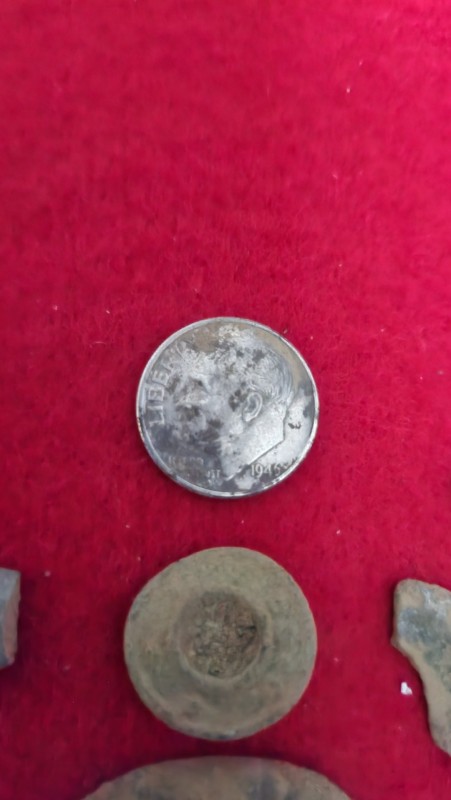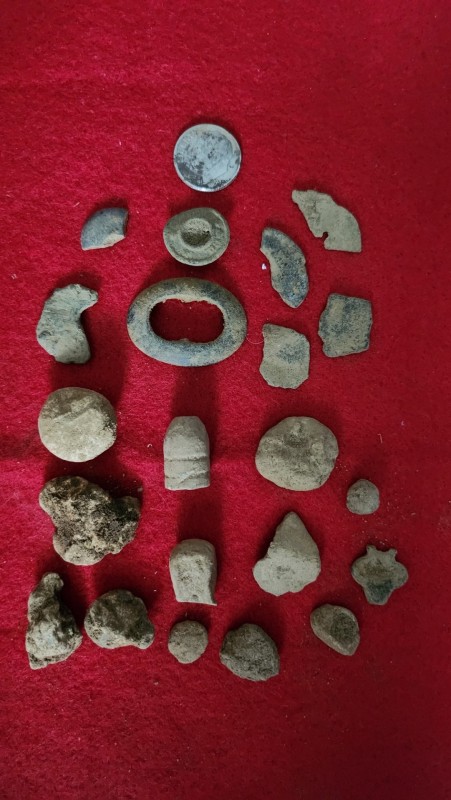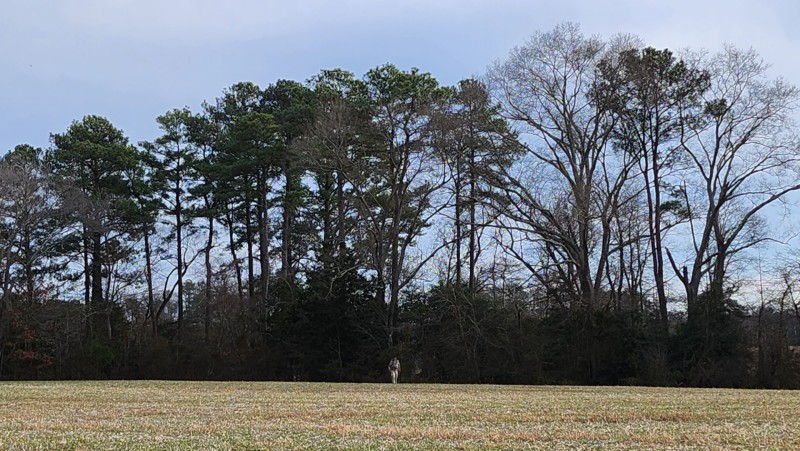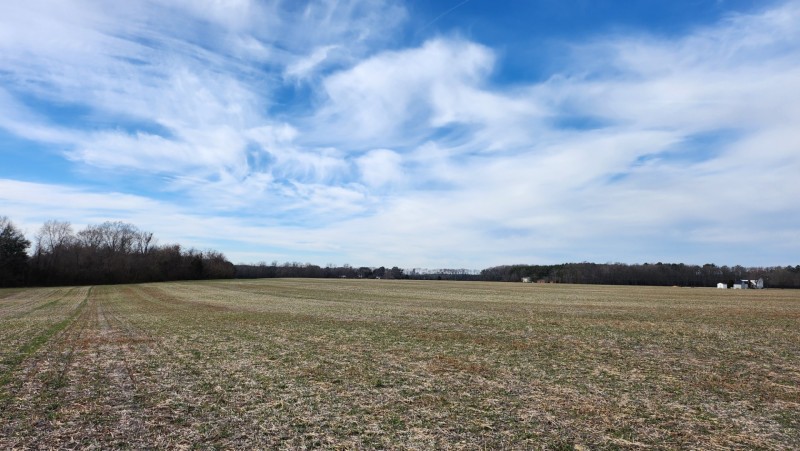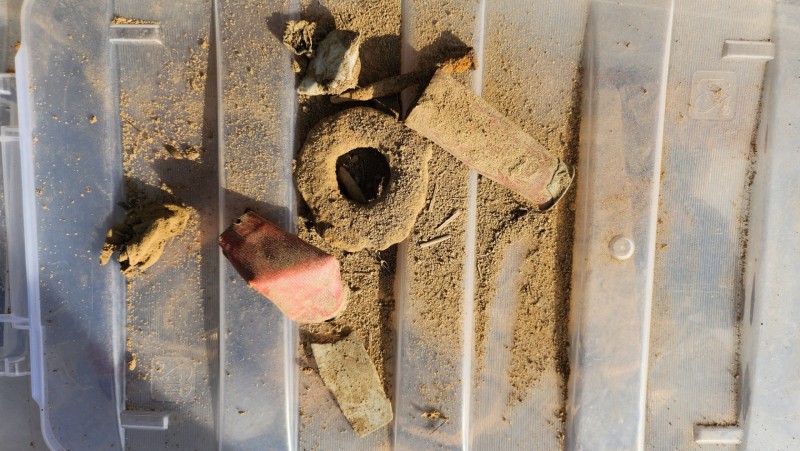-
Posts
6,119 -
Joined
-
Last visited
Content Type
Forums
Detector Prospector Home
Detector Database
Downloads
Everything posted by Chase Goldman
-

Do I Trust My Manticore In The Water?
Chase Goldman replied to phrunt's topic in Minelab Manticore Forum
-

Recovery Speed Compared To Depth.
Chase Goldman replied to Digalicious's topic in Nokta / Makro Legend Forum
If you’re mainly cherry picking high conductors in modern trash, not a bad approach to go low SF. That's taking maximum advantage of these modern SMF detectors as they also have selectable single frequency capability. But regardless of soil type, if I were going after mid-through-high conductors (e.g., relics) I would keep it in MF as that would “illuminate” targets more consistently regardless of conductivity (you could see the loss of aluminum sensitivity when you went to 4khz). If you care about nickels and gold jewelry, same principle. -

New Legend Coils And Update
Chase Goldman replied to FishBamboo's topic in Nokta / Makro Legend Forum
I'm an engineer, what can I say… -

800 Choppy And Chatty In Water? Please Help
Chase Goldman replied to Gary985112's topic in Minelab Equinox Forum
First of all, what you are experiencing is common in salt surf because of the constantly varying salinity due to the surf. You selected the appropriate mode, Beach 2. After making sure you have done a noise cancel, then you should do is an auto (pumping) GB to establish the starting GB point and then put the detector into GB tracking mode (single press of the +/- button while in the GB settings menu, you should see a sine wave symbol in the upper display). Tracking will help keep GB near the appropriate salt balance point based on salinity variation. If you are still experiencing excessive noise, then yes, you should incrementally lower sensitivity. Note that you likely won’t get the machine to remain totally quiet under these dynamic conditions and any movement of the coil from being parallel with the bottom during your swing will also generate ground noise, and there may also be noise associated with mechanical agitation of the coil in the surf. Regarding your wireless phones, there should be no cutouts as long as the detector control panel remains above the surface of the water. However, since the stock wireless headphones are not waterproof, the salt spray (over time) and an accidental dunking can ruin them, so I highly suggest using either weatherproof wireless BT phones (Quest makes these) or wired phones with the appropriate protected Nox headphone connector plug. HTH GL -

New Legend Coils And Update
Chase Goldman replied to FishBamboo's topic in Nokta / Makro Legend Forum
Yep. I'm a fan of the smaller ellipticals for all the reasons stated. I have 10x5 permanently bolted to my Nox 900 (previously the 800). But I was just trying to separate fact from folklore. Many underplay the fact that you will lose depth vs. the stock, and was trying to get a handle on that based on HerrUU’s run. 1” is not insignificant but also realistic, thanks for that info on the Simplex comparison. Looking closer at the specs, I noticed also that the Legend LG24 Coil is a 9.5x6 (vs. the Simplex SP24 which is a 9.5x5) so I suspect that the Legend LG24 depth loss will be even less as the total coil surface areas between the LG24 and LG28 (stock round) are similar at 565.5 sq. cm vs 615.8 sq. cm. -

New Legend Coils And Update
Chase Goldman replied to FishBamboo's topic in Nokta / Makro Legend Forum
Thanks for the report. Can you clarify or be more specific regarding your real world depth loss experience? Is that what you discovered in your field run or what you heard? You will lose depth compared to the stock 11", that's just physics. The key is defining what "lose much depth" really means in absolutes. As discussed earlier, whatever the absolute number is for a given site situation, it may or may not be a big deal depending on the context of the detecting situation. For example, losing half an inch at a polluted site is less of an issue if you are looking for shallow masked targets than the same loss of half an inch in wet salt sand if you are going for deep, small jewelry. -

Equinox 900.. Yes, No Or Maybe?
Chase Goldman replied to Erik Oostra's topic in Metal Detector Advice & Comparisons
He used to have a GPX and sold it because Nox was adequate for the gold on Magnetic Island and it brought nothing to the table over and above the Nox he was using beach detecting. Also, the Pulse Dive he uses for deep dives is a PI based pinpointer but also has larger mono coils that he utilizes. -

Equinox 900.. Yes, No Or Maybe?
Chase Goldman replied to Erik Oostra's topic in Metal Detector Advice & Comparisons
Eric, For what you do 900 is more about the physical improvements (CF shaft, better watertight integrity) and literal bells and whistles (Flashlight, vibration) than performance. There is nothing in performance save for a few mm in depth perhaps when using dP (pitch) audio that would make it perform any better than what you have now. If Deus 2 fills the performance and dive gaps of the 800 and 800 fills the Deus 2 gaps on dry sand and prospecting, not worth the Xtra dollars for the 900 until you've worn out your 800. Certainly not worth it to consider the Manticore. JMO. -
Now if I could only get my hands on the LG24 and/or the LG30....
-

New Legend Coils And Update
Chase Goldman replied to FishBamboo's topic in Nokta / Makro Legend Forum
Ordered from where? -

Buckles And Bullets
Chase Goldman replied to F350Platinum's topic in Metal Detecting For Coins & Relics
It's cheaper than paying for a therapist, though the stress level has significantly lowered since I started my new job...retirement. I think you could tell from the last few visits. -

Buckles And Bullets
Chase Goldman replied to F350Platinum's topic in Metal Detecting For Coins & Relics
You can borrow my spring probe - built for finding huts and privys. I'll bring it next time I'm down. -

Buckles And Bullets
Chase Goldman replied to F350Platinum's topic in Metal Detecting For Coins & Relics
No, I was too busy digging up my silver Rosie. Enjoyed the dig and coffee as usual. Dug a LOT of targets but only a few keepers. Old lead and brass. An older unidentified .45 caliber dropped lead round a bunch of smashed musket balls and melted lead and one carved lead thing below the .45 cal round. A couple of plated (silver?) pieces of buttons and buckles and a nice oval Colonial era buckle. I did dig one button but it was a snap button for a set of overalls. Dime is '46 with no mint mark. Couldn't get the new Nox 900 to quiet down even in this expansive field and sensitivity set as low as 16. So I abandoned it and went with the trusty Deus 2 which was purring along with sensitivity at 93/100. Will have to figure out what that was all about. Yep, that's Bob along the tree line digging Colonial pull tabs. Great time. My big trash not counting all the fired modern bullets, casings, and buck shot. -
That's where I'm at too Andy. If I get a solid tonal hit and mostly mid scale non-ferrous TIDs I'm digging it. It is just really in stark contrast in what I am used to on the D2, and of course, the 800.
-

Don't Forget The Ground Stability Setting.
Chase Goldman replied to parkgt's topic in XP Deus II Forum
It's in the GB options (along with "Grab" and "Tracking"). Not there if the program mode doesn't support it (i.e., Mono, Gold Field, Relic and Beach/Dive). The short video linked above visually steps you through it. -

You Ever Do This?
Chase Goldman replied to Ridge Runner's topic in Metal Detecting For Coins & Relics
I keep a photo record of my key finds and store them in either a display case or labeled plastic bags. The photos help jog my memory on the finds' site and date, too. I should keep a written journal too, but I'm just not that organized. -
Just need to get more data points and time on the machine to make some real conclusions.
-
Definitely not an issue on high conductors - but I am also seeing it on a buried minie ball. Weird. I need to test more in the "wild".
-
I have only given the Nox 900 a run through my meager test garden to check out features and operability of my replacement 900 following a defect in the Horseshoe button of my original unit. I am solely detecting using my 10x5 Coiltek NOX coil right now. I fully expected reduced stability with respect to Target ID with the expanded Target ID range on the Nox 900, but it seems excessive on certain test targets. Specifically for "deeper" mid-conductors (deeper is in quotes because I am only using a 10x5 coil, so these targets are not all that deep). I am talking large variations in TID, almost random numbers with a few repeating numbers that appear to correspond to the "correct" TID. I am getting a solid audio target hit (I am using dP tones). Very shallow high conductors are better (not rock solid, but 2-3 digit variation). I am just putting this out there right now for comment from other Nox 900 users. This is just a very preliminary observation and I am withholding any judgment or conclusions until I see how Nox 900 behaves in the "real" world this week.
-

A Stroll In The Park With The Manticore
Chase Goldman replied to strick's topic in Minelab Manticore Forum
Finding a LOT of TID instability on the Nox 900 (vs. the 800) for "deeper" mid-conductive targets based on a run through my test garden. Shallow, high conductors still vary by 2 or 3 digits. I say "deeper" in quotes because the first thing I did was slap the 10x5 coil on the Nox 900. More variation than I would expect even for the expanded TID range. I am holding judgement on this until I get into real world conditions. Thought I would note it here, even though we are talking about M-core. If for nothing else, it might help determine whether the M-core has more stable TID than the Nox 900. FWIW. Would like to hear from abenson or Jeff McClendon or other Nox 900 users on this. I'll post a thread in the Equinox forum... -

Don't Forget The Ground Stability Setting.
Chase Goldman replied to parkgt's topic in XP Deus II Forum
There's very little written about the ground stability setting other than what is in the Deus 2 manual because it shouldn't make a big difference on target acquisition except in mineralized soils that have variable ground conductivity. Ground stability settings are not available in the mono/beach/dive/relic/gold field modes. (Note that the linked video above says that the default GS setting in Relic mode is "1", that might be true but it is a fact that it is not adjustable in relic mode and the manual is silent on it. However, the manual does say that in Mono mode, ground stability is fixed at 1). Note that this setting is different than the "Magnetic Ground" and "Salt Sensitivity" settings in the beach/dive modes. Ground stability settings need to be set individually for each mode that has the setting available. Ground stability can be set to 1, 2, or 3. The default is "2" for all modes except Park where it is "3". Basically, its a ground feedback filter: 1 - This removes all ground feedback filtering other than rejecting the ground signal based on the ground grab or manual ground balance setting. This setting allows you to hear it all and might improve your ability to hear faint signals, especially in mineralized ground that raises the balance point above your established ground balance setting. However, you will be bombarded by ground feedback "micro" changes in ground conductivity due to pockets of mineralization, bricks, ceramics etc. especially if running with little discrimination. I believe it also increases coil bump sensitivity. 2 - Mostly rejects ground variations above the ground grab setting but there is some signal processing secret sauce that still enables the machine to still detect targets in high mineralization conditions (conditions that locally raise the ground conductivity above the balance point). 3- Maximum filtering applied to quiet ground feedback due to ground conductivity variations and also minimizes coil bump sensitivity. It is the "quietest" ride, but you might miss some faint targets as a result depending on ground conditions. As with all of these things, YMMV and experimentation to see what works best for your local conditions is the best course. I don't think you can really handicap depth or faint target sensitivity significantly unless you go to "3", and then only for certain soil conditions and targets. HTH -
I just got the new 900, great upgrades to the 800 to make it beachworthy (same physical improvements as Manticore). They appear to be more readily available from dealers (and Cabelas) than M-core and frankly, for dedicated beach hunting, I am not seeing anything that warrants the $500 to $600 premium of the M-core over Nox. Something to consider.
-
I'm seeing the M-core distribution spigot pick up across the board, so Cabelas won't be the only game in town for long. But yeah, if you gotta have it right now, Cabelas...
-
Just to be clear for others following along, most dedicated metal detecting equipment dealers who sell ML detectors will honor Minelab's 15% US military discount (Active Duty, separated veteran, ir retired veteran) on metal detectors. Cablelas does not honor the ML military discount but does honor their own 5% military discount. As mentioned earlier, on M-core at $1599 this is up to a $160 delta in cost if you are a veteran purchasing from Cabelas vs. a dealer honoring the ML discount (5% = 80, 15% = $240). Just putting it out there for info for those eligible forum members looking to make a Manticore buy decision.


